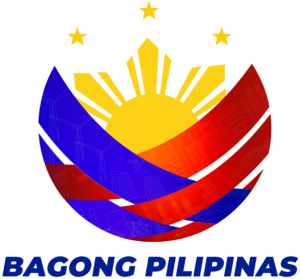by Jacob Philip V. Peralta*
Over the years, the roles of women have been steadily rising in the fields of commerce and industry in the Philippines. From mere members of a silent mass during the Spanish period, women have proven their tenacity for having undertaken crucial responsibilities in society.[1]
During the Spanish era, the role of women was reduced to housekeeping and childrearing as this was stereotypical at that time. In effect, women were viewed to be reserved, shy, and submissive to men. But despite all of these impressions on women, Dr. Maria Luisa Camagay, in her book, Working Women of Manila in the 19th Century, wrote that “… Filipino women of the Spanish period had a mind of their own, assertive, active, and enterprising…” However, because of the norms set by the Spaniards, their status remained to be inferior to men.[2]
At the turn of the 19th century, numerous occupations became highly dependent on the presence of women employees, especially in the manufacturing industry. The entry of women into the factory system showcased their industrious prowess highlighting their qualities like adaptability, patience, and the resistance to commit frauds, which were deemed advantageous. Filipinas possessed great skills in weaving, using different kinds of fiber like abaca, pineapple, silk, and cotton, to make a variety of cloths. They also excelled in making hats, cigar cases, mats, baskets, slippers, purses, umbrellas, seat covers, etc.[3]
First thought of as a hobby, weaving eventually turned into a profitable business as they were able to earn money from selling their products in public markets. Embroidery, usually a task done by women, became one of the chief exports of the Philippines during the American colonization era. In 1921, the exportation of embroideries amounted to at least Php 15,000,000 and in 1919, exports of hats amounted to Php 1,490,020.[4] The sheer number of export goods made by Filipinas proved the importance of their role in the economic development of the country. Moreover, it was observed by the Americans that Filipinas showed signs of independence because of their urge to improve the economic status of their families.[5]
The coming of the Americans created opportunities for women to earn college degrees and learn the essentials of business. According to Mendoza-Guazon, women were employed in managerial positions as heads of business firms dealing in textiles and native cloths, jewelry, embroideries, pawnshops, rice and foodstuff, bakeries, real estate, and transportation.[6] The influence of women in business has even extended to retail and other industries previously dominated by men.[7]
An analysis of the role of women in society during the American regime showed their evolving presence in the economy. Filipinas were given more responsibilities as managers in different industries because of their leadership skills and good work ethics.
The prioritization of education was responsible in improving the influence of women in the fields of trade and commerce. In the article written by Carolyn Sobritchea, she mentioned that, “the kind of education the Filipino women received during the American colonial period primarily prepared them to respond to the demands of the colonial bureaucracy and economy. With the increase in the female literacy rate, more women gained access to new types of work and careers, like in law and science.”[8] The significance of this is that women were able to get the opportunity to break away from traditional gender-related roles. This rise in opportunity became the guiding light towards the independent Filipino women that we see today.
References:
Camagay, Maria Luisa. Working Women of Manila in the 19th century. Quezon City: University of the Philippine Press, 1995
Mendoza-Guazon, Maria Paz. The development and progress of Filipino women. Manila: Bureau of Print, 1928
Sobritchea, Carolyn Israel. Women’s Role Philippine History: Selected Essays 2nd edition. American Colonial Education and its impact on the status of Filipino women. Diliman, Quezon City: University Center for Women’s Studies and the University of the Philippines, 1996
* The author is a student in De La Salle University Manila taking up AB History. He was a former OJT in the National Historical Commission of the Philippines
[1] Camagay, Maria Luisa. Working Women of Manila in the 19th century. Quezon City: University of the Philippine Press, 1995, p. 1.
[2] Ibid., p. 119.
[3] Mendoza-Guazon, Maria Paz. The development and progress of Filipino women. Manila: Bureau of Print, 1928, p. 33.
[4] Ibid., p. 59.
[5] Ibid., p. 34.
[6] Ibid., p. 56.
[7] Ibid., p. 59.
[8] Sobritchea, Carolyn Israel. Women’s Role Philippine History: Selected Essays 2nd edition. American Colonial Education and its impact on the status of Filipino women. Quezon City: University Center for Women’s Studies and the University of the Philippines, 1996, p. 79.

